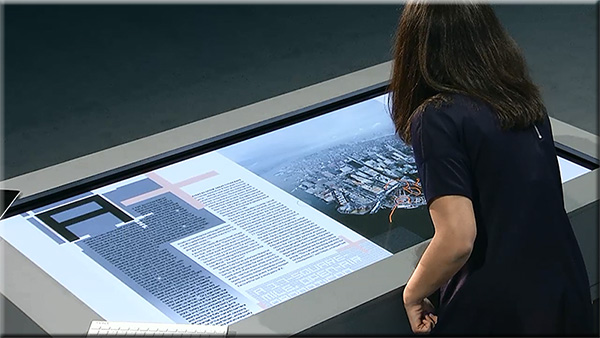Meticulously carved wooden sculpture of man and nature — from mymodernmet.com by Paul Baliker
.

First a definition:
A digital audio workstation (DAW) is an electronic system designed solely or primarily for recording, editing and playing back digital audio. DAWs were originally tape-less, microprocessor-based systems such as the Synclavier. Modern DAWs are software running on computers with audio interface hardware.
Secondly, some items from Adam Dachis on LifeHacker.com:
From DSC:
For those who want to dip their feet into the pool quickly to see what it’s like, I would recommend checking out Garageband — it’s a powerful tool that can give you some nice results — and the learning curve is far better/easier than the more complex tools out there.
Game changers + kids — from live.huffingtonpost.com
Excerpt:
What happens when you bring business innovators together with today’s youth? Choose2Matter is about to find out. We talk to the people behind Choose2Matter and leaders of the business world about the power of the idea that everyone matters.
Also see:
.
From DSC: re: Adobe’s Project Context:
This is the type of hardware/software combination that I’ve been hoping for and envisioning! Excellent!
It appears to be the type of setup whereby students could quickly and easily collaborate with one another — in a face-to-face setting (and ideally in remote locations as well) — by not just displaying files but also being able to share files with one another. Files can be sent up to the interactive, multi-touch displays as well as to an interactive table. So it’s not just displaying files, but actually sharing files and being able to collaboratively work on a project.
Eventually, I see this being able to be done in your living room. What if MOOCs could integrate this type of web-based collaboration into their projects?
But for now, this is a HUGE step forward in this vision. Great work Adobe! This is innovative! Very helpful!
Example screenshots:
.
.
.

..
Also see:
.
Digization, sole growth engine for Europe’s creative industries? — from inaglobal.fr/en/… by Nicolas Vaquier
[NEWS] According to a recently published study entitled The Digital Future of Creative U.K., digitization is the sole growth engine for Europe’s creative industries.
.

.
Excerpt from Conclusion:
The study announces the transformation of the value creation chain. The horizontal integration of production, distribution and marketing intermediaries that prevailed in the traditional system will be dissolved by more profitable digital alternatives, diminishing the importance of these intermediaries. The study predicts that the concept of “chain” will furthermore be replaced by that of a “network” of relations, with consumption and participation at its heart. The rise in the number of players and the lowering of entry barriers will thus allow for greater quantity as well as relevance of content on offer.
Ability to do creative, non-routine work will be a must in the coming automation era. Is this realistic for most workers? — from robohub.org by Martin Ford
Excerpt:
There can be no doubt that technological progress has resulted in a far more prosperous society. Technology has often disrupted entire industries and, in some cases — as with the mechanization of agriculture — destroyed millions of jobs. In the long run, however, the economy has always adjusted and new jobs have been created, often in entirely new industries. Why then should we be concerned that the revolution in robotics and artificial intelligence will lead to sustained unemployment? I think the answer has to do with the nature the work that most members of our workforce are best equipped to perform.